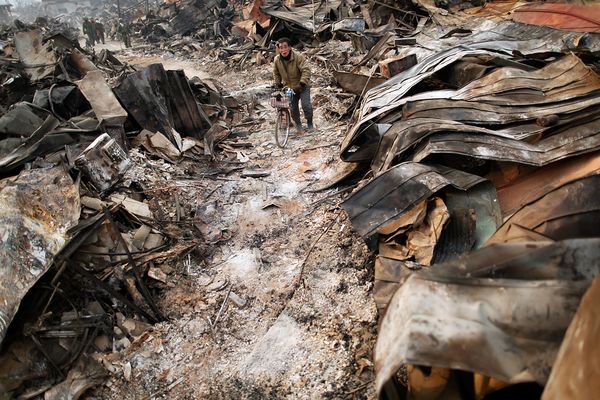Japan earthquake and tsunami: loss and recovery in numbers
One year after north-eastern Japan was shaken by a 9.0 magnitude earthquake and inundated by tsunami waters, the National Police Agency figures show the scale of the disaster and how much progress the country has made towards recovery.
The Great East Japan Earthquake and resulting tsunami that tore through the country’s north-eastern coastal communities killed almost 16,000 people and destroyed the lives of thousands more.
The double disaster, which in turn triggered a third crisis at the Fukushima nuclear plant, may have been a year ago, but for many of those in the worst-affected areas life remains in a state of turmoil.
In Miyagi, Iwate and Fukushima prefectures whole communities were wiped out by the ferocious power of the tsunami. On top of the current known death toll, a further 3,000 people are still listed as missing.
Even among those that survived, many were unable to return home. According to the Japanese authorities, more than 330,000 are still living in some kind of temporary accommodation, including those staying with friends and family or in hotels. More than 500 remain in evacuation centres.

The Great East Japan Earthquake and resulting tsunami that tore through the country's north-eastern coastal communities killed almost 16,000 people and destroyed the lives of thousands more
National Police Agency of Japan figures show almost 300,000 buildings were destroyed and a further one million damaged, either by the quake, tsunami or resulting fires. Almost 4,000 roads, 78 bridges and 29 railways were also affected.
Patrick Fuller, of the International Federation of Red Cross and Red Crescent Societies and who was there in the immediate aftermath of the disaster, tells of the “complete and utter devastation”.
“The only way I can describe how it was is that it was just like out of the Terminator movie – a futuristic scene of mangled and twisted wreckage.”
The Japanese authorities estimate a staggering 25 million tons of debris was generated in the three worst-affected prefectures. This is many times greater than the amount created by the 2010 Haiti earthquake.
Consequently, the clean-up has been a mammoth task, even for a nation known for its preparedness.
Much of the rubble and waste has been cleared from the streets, but the Japanese environment ministry last month revealed only 5% had been disposed of and 72% was still being stored at temporary sites.
Officials explained the delays had been caused by a number of factors, including difficulties finding sites for incinerators in affected areas and the reluctance in other prefectures of Japan to take the waste amid fears of radiation contamination.
Environment Minister Goshi Hosono said the ministry’s original goal of completing disposal by the end of March 2014 was unrealistic and urged other parts of the country to help out.
However, the United Nations Environment Programme (UNEP) says the Japanese authorities have made remarkable progress considering the upheaval and disruption caused by the disaster.
The organization praised Japan’s emphasis on waste segregation and recycling and said lessons could be learned from the way the country had managed the quake and tsunami debris.
Yet, while most the rubble and waste has been cleared, there remain long stretches of empty coastline where rebuilding has yet to take place. In fact, debate still continues on whether some residential areas should be moved inland and to higher ground.
A survey by the Yomiuri Shimbun newspaper late last year found that 26 out of 37 municipalities in coastal areas of Iwate, Miyagi and Fukushima prefectures were considering large-scale residential relocations.
A more recent survey for the same paper found 72% of respondents said they could see little or no progress in reconstruction efforts. Asked to choose one or more explanations why, 75% blamed the Fukushima nuclear crisis, 63% said it was the devastating impact of the earthquake, while 61% agreed there were problems in the government’s response to the disaster.
But Patrick Fuller of the Red Cross points out that many towns destroyed by the quake and tsunami are “starting from scratch” and that Japan’s progress after a year compares to that achieved in three years in places like Indonesia and Sri Lanka after the 2004 tsunami.
The task for the Japanese government now is to help its people get back on their feet, given the inevitable crippling economic cost of such a disaster, he says.
Last year, the Cabinet Office of Japan estimated it cost the country 16.9 trillion yen ($210 billion).
But the country’s national and local authorities believe the reconstruction will actually cost more than 23 trillion yen ($286 billion) over a decade.
Crucial to the rebuilding is getting affected communities back to work and giving them a sense of purpose, says Patrick Fuller.
“This is going to take a monumental effort from the government and it is going to take years.”
[youtube Gu0MQ-45_3c]
[youtube 9UsIaH2wnrg]
